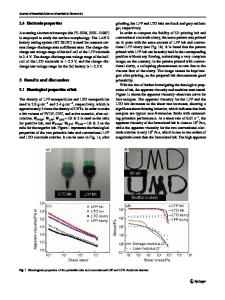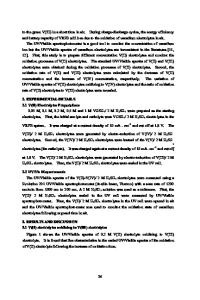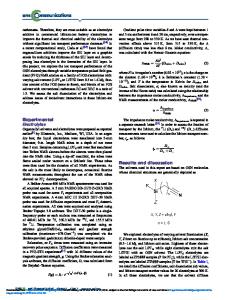3DOM Structure for Battery Electrodes and Electrolytes
The performance of lithium-ion batteries, especially at high rates, critically depends on the morphology of the battery active materials and the microstructure of the electrode. In particular, in all-solid-state batteries, the structure is critical becaus
- PDF / 729,098 Bytes
- 15 Pages / 439.37 x 666.14 pts Page_size
- 107 Downloads / 359 Views
3DOM Structure for Battery Electrodes and Electrolytes Kiyoshi Kanamura
8.1
Introduction
The capacity of lithium-ion batteries, especially at high rates, critically depends on the morphology of the battery active materials and the microstructure of the electrode [1]. A three-dimensionally ordered macroporous (3DOM) structure is an ideal structure due to its high porosity and regularity, which provide a large contact area between the electrode and electrolyte and a uniform current distribution, respectively. This chapter describes 3DOM anodes and 3DOM solid electrolyte-active material electrodes.
8.1.1
3DOM Anode
8.1.1.1
3DOM Li4Ti5O12 Anode
Li4Ti5O12 has been investigated as an anode material for lithium batteries [2–5]. Li4Ti5O12 has a spinel-related structure (space group: Fd3m), and Li+ ions can be inserted into the crystallographic structure reversibly at an electrode potential of 1.55 V versus Li/Li+. It is well known that Li4Ti5O12 shows a very small volumetric change during charge and discharge [2]. 3DOM Li4Ti5O12 was prepared by a colloidal crystal templating method combined with a sol–gel method. At first, monodispersed polystyerene (PS) latex was filtered. Following filtration, the PS deposit was heat-treated at 110 °C to interconnect all the PS particles. In the prepared PS membrane, PS particles were
K. Kanamura (*) Department of Applied Chemistry, Tokyo Metropolitan University, Hachioji, Tokyo, Japan e-mail: [email protected] T. Osaka and Z. Ogumi (eds.), Nanoscale Technology for Advanced Lithium Batteries, Nanostructure Science and Technology 182, DOI 10.1007/978-1-4614-8675-6_8, © Springer Science+Business Media New York 2014
81
82
K. Kanamura
Fig. 8.1 SEM image of 3DOM Li4Ti5O12
i / mA cm-2
4 2 0 -2 -4 1.0
1.5
2.0
2.5
3.0
E / V vs. Li/Li+
Fig. 8.2 SEM image of 3DOM Li4Ti5O12
close-packed and there was a 26 vol.% void space for penetration by fluid precursor. A precursor sol for Li4Ti5O12 was injected into the void space. After gelation, the gel-PS composite was calcined to remove the PS template and convert the gel into Li4Ti5O12. A cross-sectional scanning electron microscope (SEM) image of 3DOM Li4Ti5O12 is displayed in Fig. 8.1. The inverse opal structure can be seen, and the interconnected pores with uniform size were clearly observed on the entire region. A cyclic voltammogramm of 3DOM Li4Ti5O12 clearly shows reversible redox peaks at 1.55 V versus Li/Li+ due to the solid-state reaction of Ti3+/4+ in the spinel structure (Fig. 8.2). Figure 8.3 shows the charge and discharge curves of a 3DOM Li4Ti5O12 electrode measured at various currents. The charge and discharge curves
8
3DOM Structure for Battery Electrodes and Electrolytes
83
Fig. 8.3 Charge and discharge curves of 3DOM Li4Ti5O12
Fig. 8.4 Charge and discharge cycle stability of 3DOM Li4Ti5O12 evaluated at 0.1 C
show a very flat plateau at a potential of 1.55 V. The very flat plateau indicates a characteristic of two-phase reactions. It has been proposed that Li+ ions are inserted into Li4Ti5O12, which convert
Data Loading...











